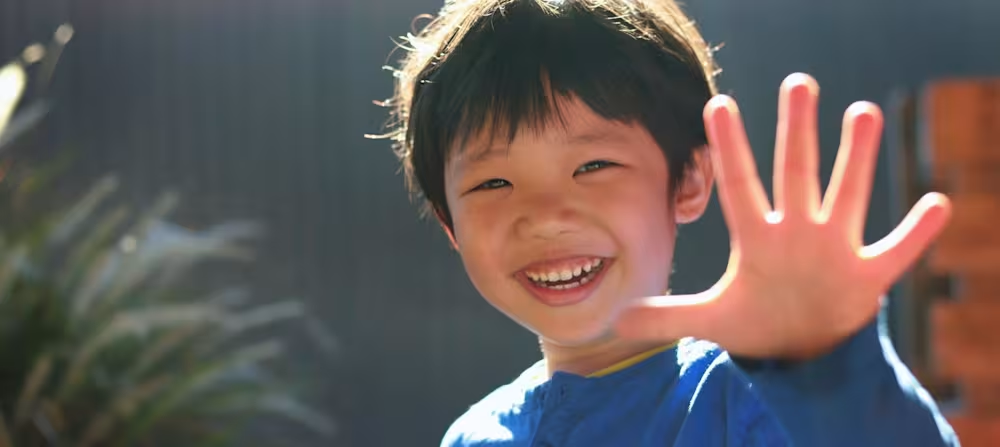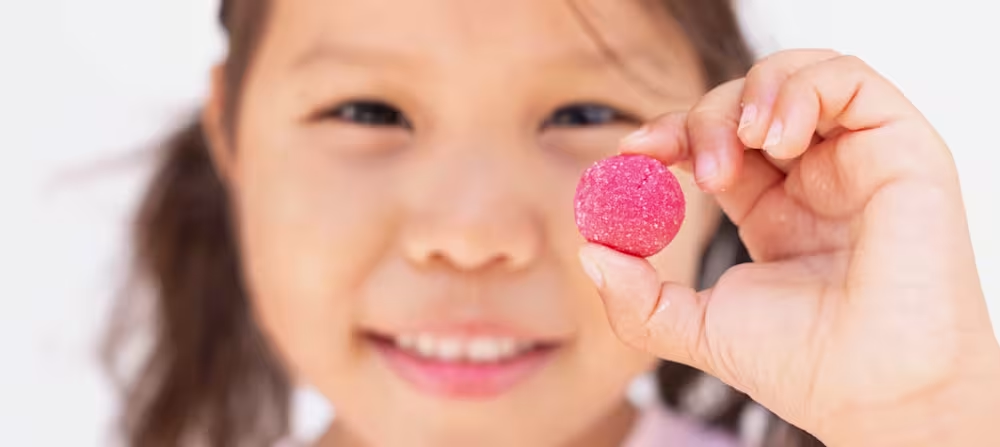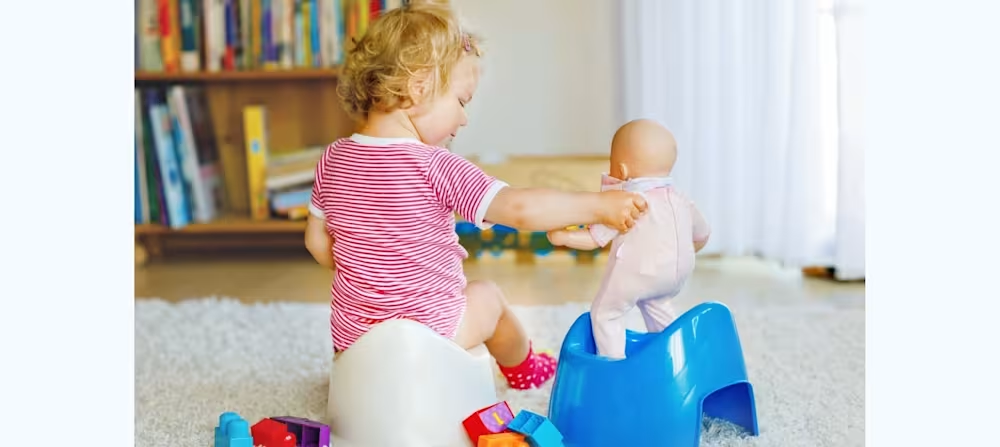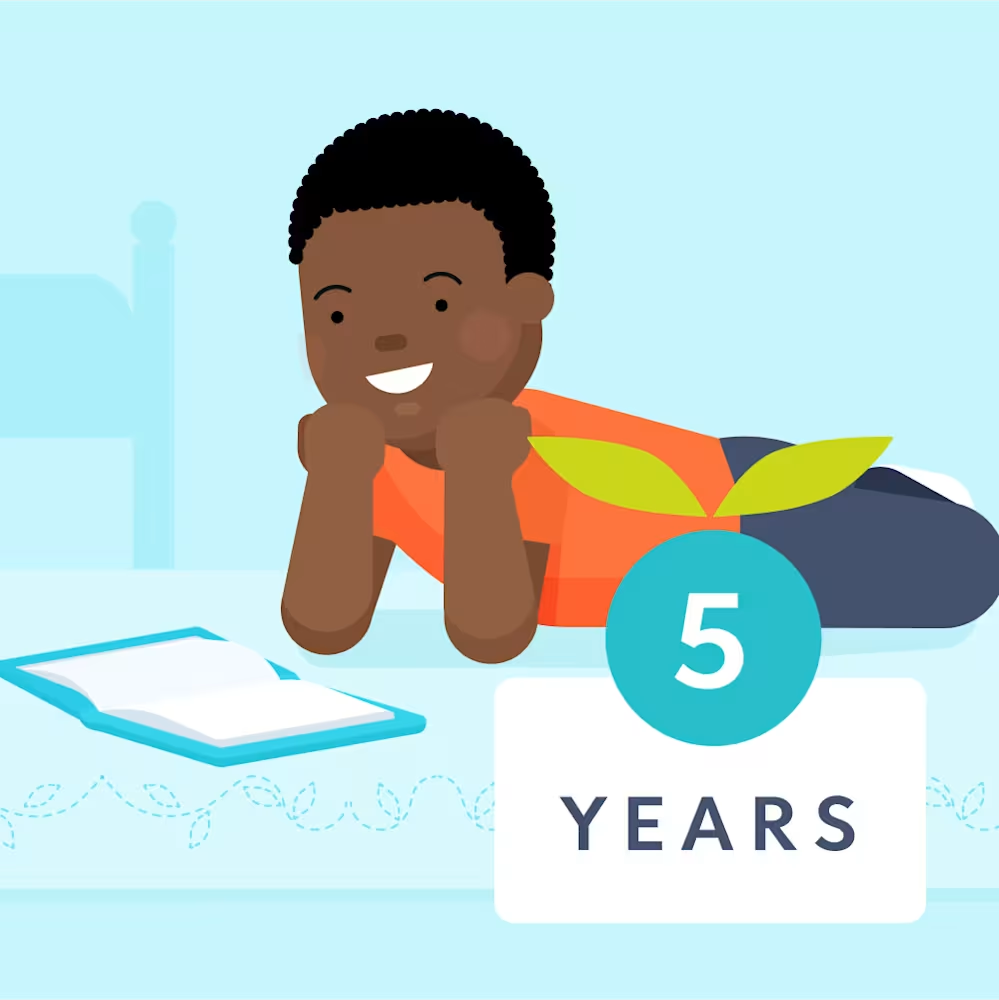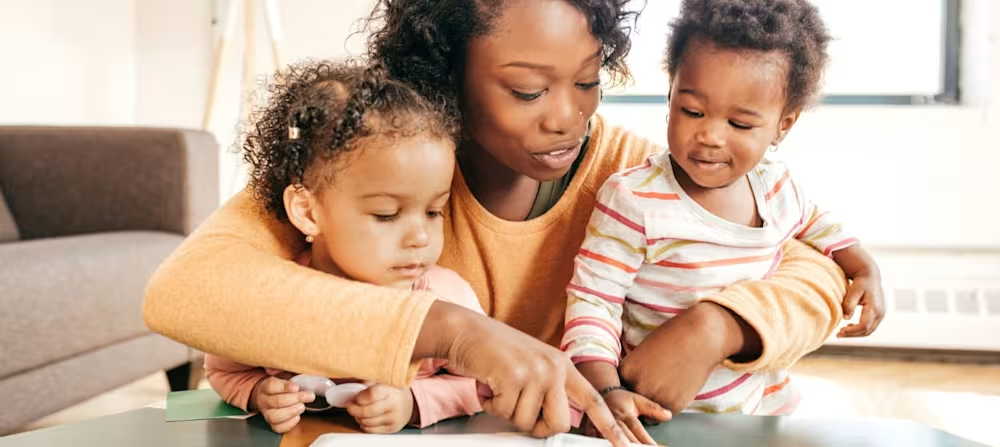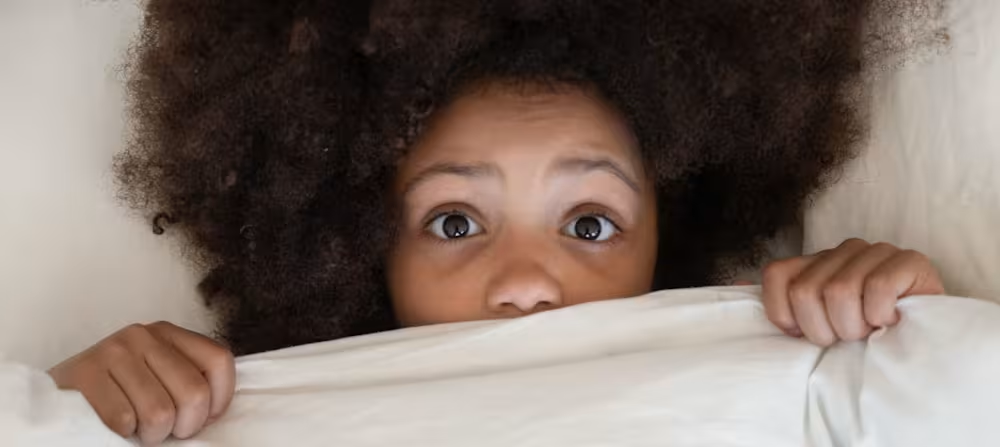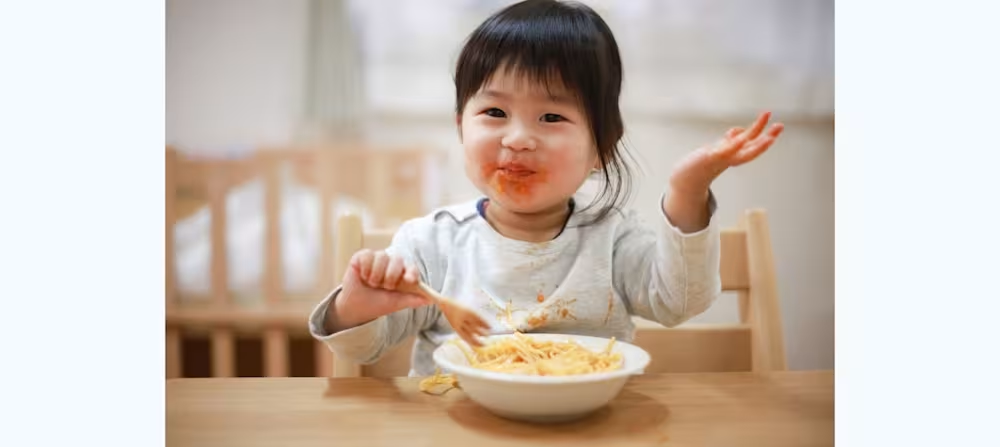4 year old child milestones: Development, growth, speech, language
Updated Dec 10, 2025

Your 4 year old may not seem much like a toddler anymore. Preschoolers are learning and growing quickly and expressing even more independence now, thanks to developing speech, cognitive, and physical skills. They may be able to dress themselves, use the toilet independently, and even lend a hand in the kitchen! While they’re not quite ready to head off to college quite yet, they are getting closer to kindergarten readiness which may feel like almost the same thing at this point. (Cue those happy tears!)
In this article, we’ll take you through the 4 year old milestones you can expect, give you a handy development checklist, and provide useful tips to help ensure your preschooler is learning and growing as much as possible.
Editor's note
When we discuss children and development at Huckleberry, we use their adjusted age (vs. actual age) which can still impact growth beyond toddlerhood. Keep in mind that kids don't all hit 4-year milestones at the same time and there’s a wide range of what's normal for growth and development at this age. Usually, the milestones listed here are met between ages 4 and 5. If you're worried about how your preschooler is growing or if they might be a bit behind, it's a good idea to chat with their doctor.
Table of Contents
4 year old child milestones at a glance
Development:
Between 4 - 5, preschoolers are growing and changing in many ways. 4 year developmental milestones mean they’re exerting their independence by doing things like getting dressed, eating, and going to the bathroom on their own (with help as required). They can also express themselves quite well at this age thanks to being able to speak in complete sentences and say words clearly and correctly.
Children this age are also using their imagination, physical abilities, and improved language skills to engage in all sorts of play. They enjoy being around friends and experiencing new activities too.
Sleep:
We recommend that 4 year olds get about 10 - 13 hours of sleep per 24-hour period, which is in line with the American Academy of Pediatrics recommendations [] for 3 - 5 year olds. This sleep total may include a short nap, but at 4 many children have stopped napping. If your preschooler is getting enough rest at night and no longer needs a nap during the day, they may benefit from some afternoon quiet time [] in place of the nap. Note that if your child has given up napping, they may benefit from an earlier bedtime for a while as they adjust.
A common sleep issue at this age is and night terrors. Both are common among preschoolers []. Nightmares can lead to your child waking up in distress. When this happens, you can reassure them that they’re safe and help them resettle again. Your child may be having a instead of a nightmare if they are very distressed but don’t seem to fully wake up and don’t respond to your attempts to comfort them. This can be distressing to watch, but your child will likely not remember what occurred in the morning. Night terrors are generally not harmful, but if you’re concerned about your child’s nightmares or night terrors, reach out to their doctor.
At 4, your child is likely to be potty-trained during the day but it’s common for preschoolers to still wear pull-ups or diapers for sleep at .
If you’d like personalized sleep guidance for your child, consider submitting for a sleep plan through . Our step-by-step plans are tailored to your 4 year old’s needs as well as your family’s goals.
Feeding:
Your preschooler will likely need to eat every throughout the day. While they may start to go longer between snacks and meals, they will still likely eat 4 to 5 times per day. However, activities such as preschool or sports may impact their eating patterns — and increase the amount of food they eat too.
In terms of beverages, a 4 year old should still be drinking mostly water or milk. While they may enjoy and frequently ask for juice and soft drinks, these beverages carry little nutritional value and include lots of unwanted added sugars. It’s important to choose water and milk now to help shape your little one’s taste preferences and help them make healthy choices in the future too.
At this age, it’s helpful to continue to offer your child a variety of healthy food options as their taste preferences are still developing. Try to model eating the foods you’d like them to enjoy too and also get them involved in simple cooking tasks. Children often love to be involved in the kitchen! At 4, most children can pour beverages [], cut food with supervision, and mash their food too.
Growth:
At 4, children often have a weight gain of about 4 - 5 pounds per year []. They will grow around 2 - 3 inches in height per year as well.
Note that it can be normal for your preschooler to grow more or less than this between 4 - 5 years old. At well-child visits, the doctor will chart their height and weight to check that they’re growing at a regular pace and can pinpoint any health trends that need attention. If you have concerns about your child at 4 years, consult with their pediatrician.
4 year old development milestones
Physical development
Gross motor milestones
Stand on one foot: Your preschooler can likely stand on one foot [] for 10 seconds or more now, they may have only been able to do this for about 5 seconds. They may even be able to hop on one foot now too!
Climb stairs alternating feet: Stairs are hard work and your 4 year old can now probably tackle them with alternating feet, which means without having to put both feet together on the same stair before proceeding.
Catch a ball most of the time: 4 year olds have come a long way from those early days of simply rolling a ball back and forth. Now, most children this age are able to catch most balls that are bounced to them [].
Agility: The playground is an exciting place for children at this age since they are now able to do things like hop, swing, and climb []. Most kids can also do a somersault now.
Fine motor milestones
Drawing: Get ready for those first stick figures! At 4, children are often able to draw a person and include at least 3 body parts []. Kids this age are also learning shapes and are usually able to copy a triangle [] and some other patterns around this time, thanks in part to nearly fully developed hand-eye coordination []. They may also be able to print some letters.
Dressing and undressing themselves: 4 year fine motor milestones allow children to be big helpers when it comes to getting dressed and undressed. Most can even unbutton and button medium-sized buttons! Even though it can make getting ready go a lot slower than usual, these are exciting skills for your little one, so try to be patient and allow them extra time when possible.
Speech development
Speaking: Speech milestones at 4 years mean your child can probably speak in complete sentences that have four or more words []. On top of that, they’re typically using words correctly and clearly so that they’re understandable by strangers [], not just familiar people. Being able to communicate their wants and needs better typically helps cut down on frustration and meltdowns. Most children rarely have tantrums after age 4 [].
Stories: Your little one probably loves to hear you tell stories and now it’s their turn to tell them! 4 year olds can typically tell longer stories at this age and also recall parts of their day [] — like “I went to the store.” Typical 4 year old speech development also includes children being able to talk about stories they’ve heard.
Know first and last name: You’ll definitely want to take a video of your preschooler saying their full name! Most children know and say their first and last names [] around this time.
Social development
Emotional development
Pretend play: Children at 4 have usually immersed themselves in the world of make-believe in a big way. 4 year old emotional development suggests kids are getting more creative when playing and often pretend to be something else like a doctor, animal, etc. Kids this age usually like to play dress up and use props when acting out these scenarios as well. Along with this, 4 year olds often confuse what’s real and what’s imaginary [], which is developmentally normal. It may be the age where they have their first imaginary friend!
Big helpers: Children love to feel important and this is an age where they often thrive as “helpers.” [] This coincides with their growing independence, understanding more about how things work (like money, food, appliances []), and being able to follow directions with 2 or 3 steps [].
Plays with kids: 4 year olds are becoming more social. They often ask to go play with children and can usually play cooperatively now. Preschoolers often want to be like their friends [] and please them at this age too.
New experiences: Most 4 year olds enjoy doing new things [] and seeking new experiences.
Cognitive development
Counting: A cognitive development milestone for 4 - 5 year olds is being able to count 10 or more objects []. At this age, they generally understand the concept of counting.
Colors: At 4, children can usually correctly name at least 4 basic colors [].
Understanding time: 4 year olds are beginning to understand the concept of time at this point. It isn’t an easy idea to grasp, especially for impatient kids, but they are working on it! []
4 year old development milestones checklist
Keep in mind children don’t all learn and grow at the same rate. While most children will hit these milestones by around 4 years old, this might not always be the case. However, if you are concerned about your child’s growth or developmental delays when it comes to 4 - 5 year old milestones, reach out to their healthcare provider.
Stands on one foot for 10 seconds
Climbs stairs with alternating feet
Catches a ball most of the time
Hops, swings, and climbs
Draws a person with at least 3 body parts
Copies a triangle and other geometric patterns
Prints some letters
Dresses and undresses themselves
Speaks in complete sentences with 4 or more words
Uses words correctly and clearly so everyone can understand
Recalls part of their day and tells longer stories
Knows and says first and last names
Engages in more creative imaginative play with dress-up, props, etc.
Wants to be a big “helper”
Enjoys playing with other children and wants to be like them
Enjoys new experiences
What are 4 year old development red flags?
Children develop at their own pace, but there are some signs that are worth bringing up with their healthcare provider, as they may indicate an underlying issue. Let your kiddo's doctor know if you notice any of the following []:
Unable to jump in place
Has difficulty scribbling
Doesn't show interest in interactive games or playing make-believe
Doesn't engage with other children or doesn’t respond to anyone outside the family
Resists getting dressed, sleeping and using the toilet
Doesn’t comprehend the concept of “same” and “different”
Isn't using “me” and “you” correctly
Unable to follow three-part commands
You know your kiddo best! If you have any concerns about their development, reach out to their healthcare provider.
3 development tips for 4 year old children
Tip | Why it helps | How to put it into practice |
|---|---|---|
Get outside and play | Outdoor movement builds coordination, strength, and sensory skills. It also lets kids try out new abilities with confidence. | Encourage climbing, hopping, swinging, ball play, and simple games. Add messy play with mud, sand, or water for sensory fun. |
Keep reading together | Stories, songs, and books boost language, early literacy, and imagination. Preschoolers learn best through repetition and play. | Make books part of quiet time or daily routines. Ask your child to describe pictures, retell the story, or make up their own. |
Count throughout the day | Counting helps kids understand numbers, quantity, and simple problem-solving. It turns everyday moments into learning. | Count toys, snack items, or bath-time toes. Say numbers slowly out loud and invite your child to join in or take the lead. |
Find more details below:
Tip #1: Get out and play!
Getting outside is a great way to let your child explore their environment and test their new physical abilities like climbing, hopping, and swinging. You can also help your 4 year old do things like hit a ball off a T-ball stand, pass and kick a ball into a net, and play games like freeze tag, Duck, Duck, Goose, and Follow the Leader.
Preschoolers love to get messy [] too and allowing your child to play with water, mud, sand, etc. outside is great for sensory stimulation and developing fine motor skills. Messy play isn’t always as exciting for parents who then have to clean up, but seeing your child’s glowing facial expressions while stomping around in mud may make up for it.
Tip #2: Continue reading
You’ve probably been reading to your child almost their whole life and at 4 this is important too. Encourage your preschooler to read, tell stories, and sing! All of these things can help their talking, thinking, and imagination [] develop. A good way to build reading into your child’s day is by including books in their afternoon quiet time routine if they are no longer napping daily.
Tip #3: Count it out
Your child is probably starting to understand the concept of numbers and counting at this age. To help this cognitive brain development, build counting skills into your day! You can do this by counting toes or toys in the bath, buttons on shirts, or blueberries at snack time, for example. Count slowly and out loud and encourage your child to help.
Activities for a 4 year old child
1. Encourage imaginative play
Imaginative play [] has a host of benefits for children. It sparks 4 year old language development, and creative thinking skills, and is good for social skills too. Some ways to encourage your child to use their imagination include providing props and dress-up clothes, giving them prompts to work with (like “pretend we’re at the doctor's office”), and introducing everyday objects that can be used in new ways (like “how about we use this brush as a microphone!”)
To encourage imaginary play and encourage smoother morning and evening routines, check out . The app uses your child’s favorite themes to create an audio adventure that keeps them on task and get things done on time.”
2. Get cooking
At 4, your child likely loves helping you in the kitchen []. Being a big “helper” while you prepare a meal is a great way to get them interested in trying new foods, learning new words and concepts (like using measuring cups and different gadgets), and can give them a sense of pride when they can accomplish a task.
Caring for a sick child at 4 years
Sick 4 year olds can often tell you how they feel, but they may not totally be able to articulate what's going on and what they need. They still depend on you for that comfort and care! Luckily, most illnesses are mild, and focusing on rest, fluids, and reassurance goes a long way.
Hydration: Offer frequent drinks of water, especially if your child isn't interested in eating meals. Popsicles and soup can help keep fluids up.
Rest: Encourage rest and quiet play. Let your child decide when they’re ready to be more active.
Fever: Call your pediatrician if your child's fever lasts more than 24 hours or repeatedly goes over 104°F (40°C) []. Give fever reducers (like children's Tylenol or Motrin) only if recommended by your pediatrician. Keep an eye out for signs of dehydration or discomfort.
Comfort: Talk them through what’s happening and let them rest with favorite books, shows, or cuddles.
Hygiene: Remind your child to cover coughs and wash hands often to help prevent spreading germs.
When to seek help
If your child has a fever for more than 24 hours or it reaches above 104°F (40°C), call their doctor right away. These can be signs of a more serious infection or illness and it's best to rule out anything that needs medical attention.
In general, if something feels off or you’re worried about how your child looks or acts, it’s safest to check in with their doctor. And if you already talked to them but symptoms appear worse, that’s a good time to check back in too.
Takeaway: Development milestones for 4 year olds
Preschoolers are lots of fun and they learn and grow every day. They’re working on lots of new physical skills at this age, including catching balls, climbing stairs, and swinging and climbing. Their cognitive skills are also flourishing as they better learn about colors and counting and even start to understand the concept of time.
At 4, kids are usually talking in complete sentences with 4 or more words. Kids at this age usually say words correctly and clearly, and even strangers can understand what they’re saying. Because of this improved speech development, your child can express themselves more easily which can cut down on frustration and tantrums [].
Preschoolers are generally social creatures at 4. They typically enjoy playing with other children more than playing on their own, engage in imaginative play, and are excited about new experiences. Although children understand sharing better [] at this age, you’ll likely still end up needing to intervene now and then.
Between 4 - 5, your child is developing many new skills and will likely meet all of these 4 year old milestones by the age of 5. However, keep in mind there’s a wide spectrum of normal and it’s OK if your preschooler isn’t doing all of these things in this age range. If you notice any 4 year old milestone red flags or delays, consult with your child’s healthcare provider.
There are so many exciting changes to look forward to when your child is 4! Take a look back at how far your baby has come by revisiting what they may have been like as a .
4 year old development milestones FAQ
Share article:
Note: The content on this site is for informational purposes only and should not replace medical advice from your doctor, pediatrician, or medical professional. If you have questions or concerns, you should contact a medical professional.
15 Sources
Table of Contents
Share article:


